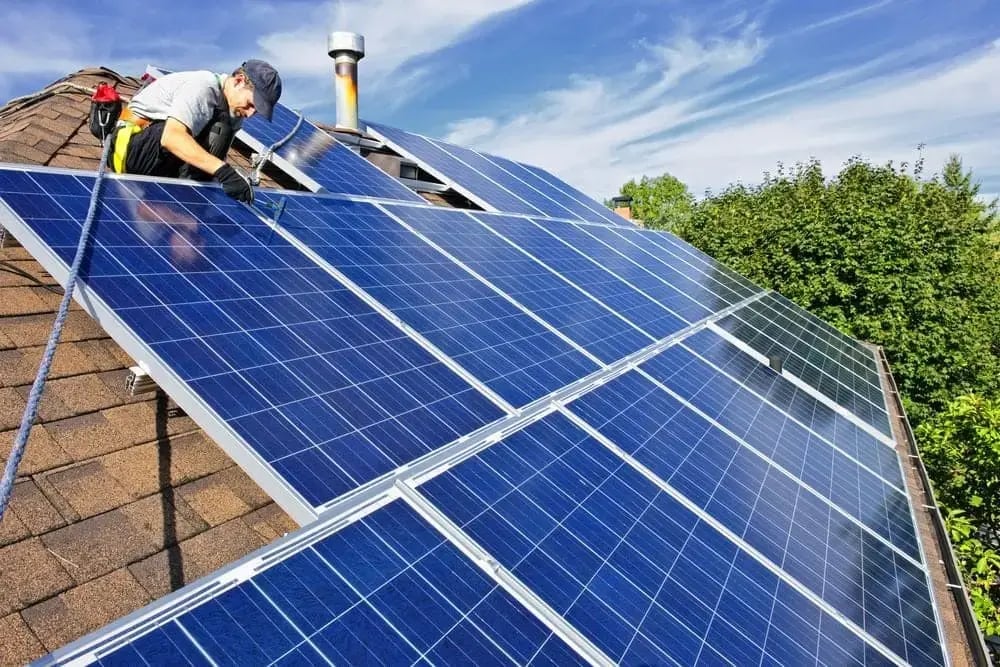5 Ways to Make Buildings More Sustainable

Earth is going through a climate change crisis due to global warming: annual temperatures have increased twice the average since 1981. 40% of the greenhouse gasses are produced due to unsustainable buildings. One way you can play your part in combating global warming is by using sustainable practices while constructing or renovating your building. Here are five ways you can adapt your building to be more sustainable.
1. Utilize Renewable Energy
Installing wind, solar and geothermal systems on your building can significantly reduce your carbon footprint. Solar panels can be placed on the roofs of your buildings which absorb the solar power from the sun and produce electricity. Home wind turbines are another excellent option for constructing in a windy area. Or you can invest in a geothermal temperature control system, an HVAC system that uses energy below ground to heat or cool homes without greenhouse emissions.
2. Reuse Water
Water helps create and sustain the earth's ecosystems, but every year, 380 billion cubic meters of municipal wastewater is produced, which causes a decrease in available potable water. If you own a building complex, like a hotel, shopping center, or resort, you can install a fully automated membrane bioreactor for wastewater treatment. This technology saves water by thoroughly cleaning and filtering wastewater, making it reusable.
Another option is a rainwater harvesting system which collects rainwater in barrels. This water can be directed to a filtration system for bathing, consumption, and washing. This system will also reduce rainwater from the building's foundation reducing its moisture levels and increasing longevity. These practices will help save water and preserve the essential ecosystems the earth needs.
In addition to rainwater harvesting systems, innovative wastewater treatment technologies like membrane bioreactors (MBR) offer a significant leap toward achieving water sustainability in buildings. By deploying MBR technology, buildings can efficiently treat and recycle their wastewater on-site, reducing the demand on municipal systems and enhancing their sustainability profile.

3. Install Cool Roofs
Cool roofs can help reduce the energy wasted on air conditioners and ventilation, a massive source of greenhouse gas producing 441 million tons annually. They use reflective or light-colored material to reduce the absorption of solar heat, reflecting solar rays instead of absorbing them. This keeps the building cool and reduces the use of air conditioners.
4. Use Eco-friendly Construction Materials
Eco-friendly construction materials, like bamboo and precast concrete slabs, can significantly reduce your building’s carbon footprint. According to world bank unsustainable, non-recyclable construction materials end up in landfills, responsible for 11% of greenhouse gas emissions. Bamboo grows fast and can be used in cabinets and floors. Precast concrete slabs are more sustainable than regular concrete because their manufacture utilizes less energy.
Another way to reuse the trash in these landfills is by using cellulose insulation from recycled newspapers. The newspaper is treated to give it desirable insulation qualities like low flammability and pest control.
5. Use Smart Appliances
In this modern age, intelligent appliances can help you increase your buildings' energy efficiency. For instance, smart thermostats decrease HVAC usage and emissions by adjusting the temperature based on the weather and if the house is occupied. Similarly, smart ovens reduce heat loss by having internal thermometers and cameras which deliver information directly to your smartphone, reducing the need to open the oven.
Smart water systems can help you increase your water efficiency by monitoring and reducing water usage, which is needed to prevent household leaks which can waste over 900 billion gallons of water annually. They can detect pipe bursts or leakages, allowing you to get a plumber to fix it immediately rather than letting the water over time and mold grow till you notice it. The devices will reduce your bills and carbon footprint over time.
Endnote
Adopting sustainable practices can help reduce greenhouse gasses which contribute to reducing global warming. Decrease your carbon footprint using solar, wind, or geothermal energy to produce electricity and cool roofs to keep the building cool in hot weather. Smart appliances can help reduce the energy used for the HVAC. Using cellulose insulation or old reusable equipment while constructing can help lessen the trash in landfills. Use MBR technology and construct rainwater harvesting systems to save water. These practices will make your building more sustainable.

Anuj Srivastava
Anuj Srivastava is a principal partner at NY Engineers. He is known for his MEP franchise market knowledge. Anuj is currently leading a team of 100+ MEP/FP engineers and has successfully led over 1500 franchise projects in the US.
Join 15,000+ Fellow Architects and Contractors
Get expert engineering tips straight to your inbox. Subscribe to the NY Engineers Blog below.


